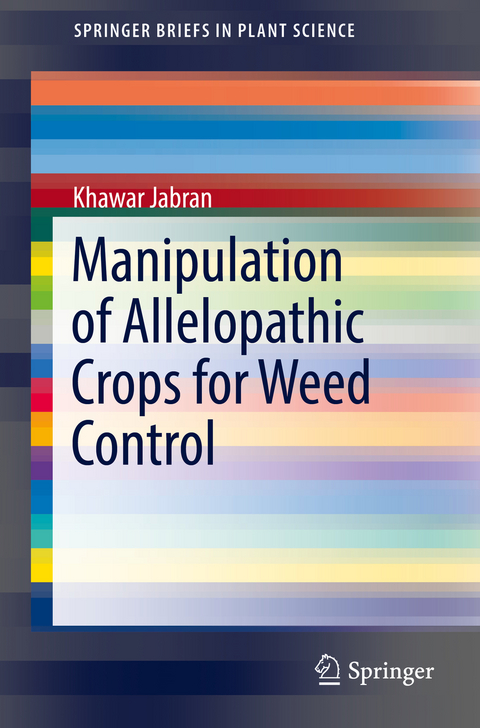
Manipulation of Allelopathic Crops for Weed Control
Springer International Publishing (Verlag)
978-3-319-53185-4 (ISBN)
Dr. Khawar Jabran is working as Assistant Professor in the Faculty of Agriculture and Natural Sciences at Duzce University, Turkey. He is actively involved in researching, teaching and writing about agriculture. His research focuses on the increase of crop yields through improved crop management practices and the management of abiotic and biotic (particularly weeds) stresses. Major crops (rice, wheat, cotton, maize, canola, sorghum etc.), and environmentally-friendly methods of weed control are the primary concentration of his research work. Dr. Jabran has over a decade of research experience and more than 150 publications in peer-reviewed journals, books, and conference proceedings. Moreover, he is an editor and reviewer of highly-rated international journals.
Chapter 1: Allelopathy-Introduction and Concepts.- Chapter 2: Wheat Allelopathy for Weed Control.- Chapter 3: Brassicaceae Allelopathy for Weed Control.- Chapter 4: Maize Allelopathy for Weed Control.- Chapter 5: Rice Allelopathy for Weed Control.- Chapter 6: Rye Allelopathy for Weed Control.- Chapter 7: Barley Allelopathy for Weed Control.- Chapter 8: Sorghum Allelopathy for Weed Control.- Chapter 9: Sunflower Allelopathy for Weed Control.
| Erscheinungsdatum | 10.03.2017 |
|---|---|
| Reihe/Serie | SpringerBriefs in Plant Science |
| Zusatzinfo | X, 87 p. |
| Verlagsort | Cham |
| Sprache | englisch |
| Maße | 155 x 235 mm |
| Themenwelt | Naturwissenschaften ► Biologie ► Botanik |
| Naturwissenschaften ► Biologie ► Genetik / Molekularbiologie | |
| Schlagworte | Allelochemicals • Allelopathy • biochemistry • Biomedical and Life Sciences • Botany and plant sciences • crop rotation • Developmental Biology • Field crops • Life sciences: general issues • Plant Anatomy/Development • plant biochemistry • plant ecology • Plant Physiology • systems biology • Weed control |
| ISBN-10 | 3-319-53185-9 / 3319531859 |
| ISBN-13 | 978-3-319-53185-4 / 9783319531854 |
| Zustand | Neuware |
| Haben Sie eine Frage zum Produkt? |
aus dem Bereich


